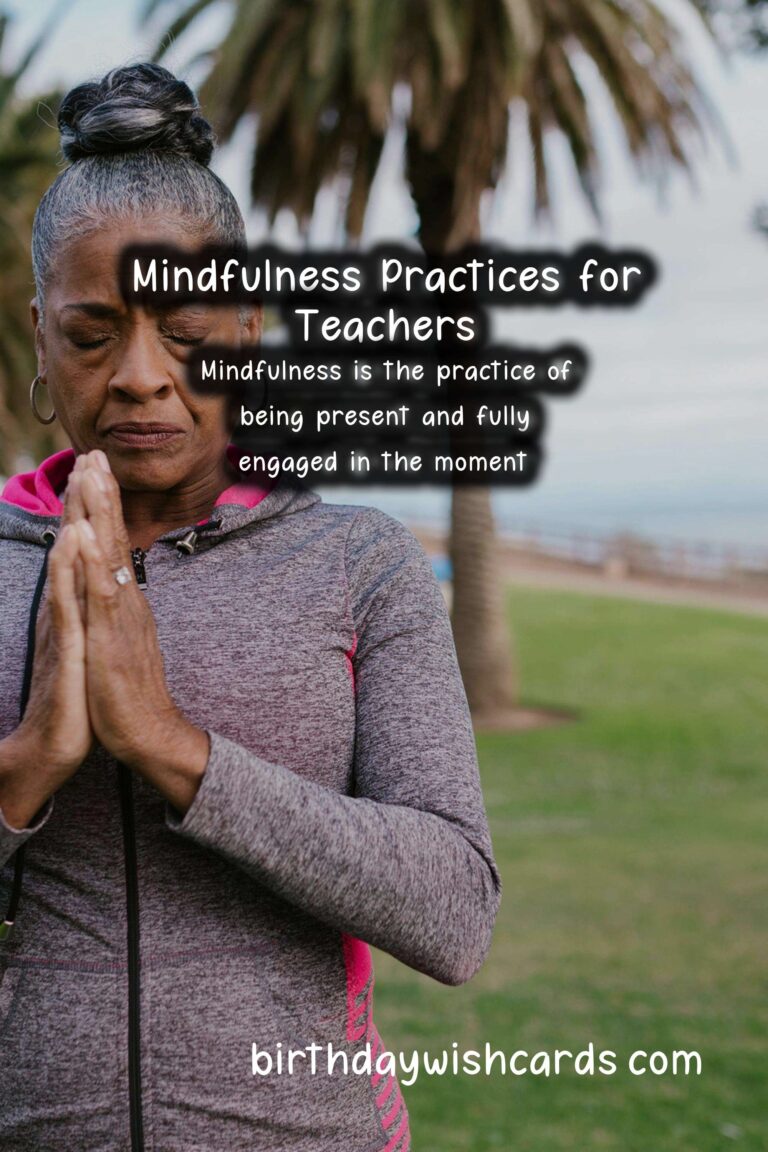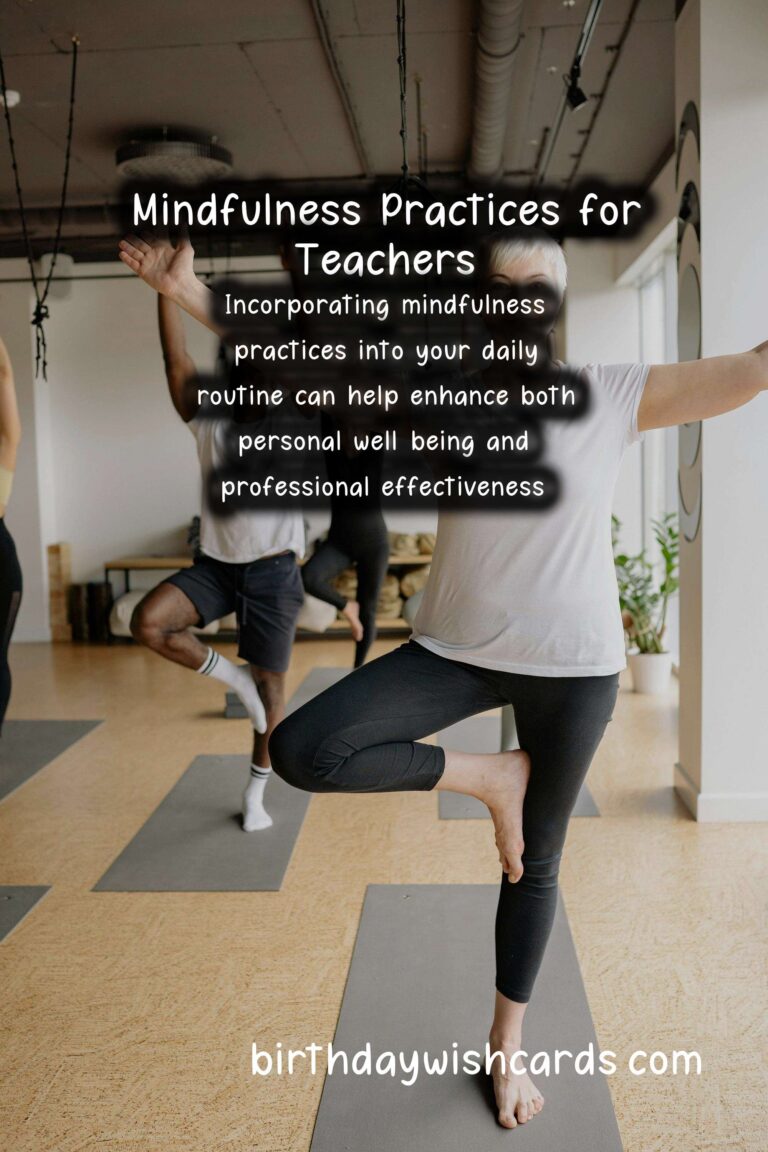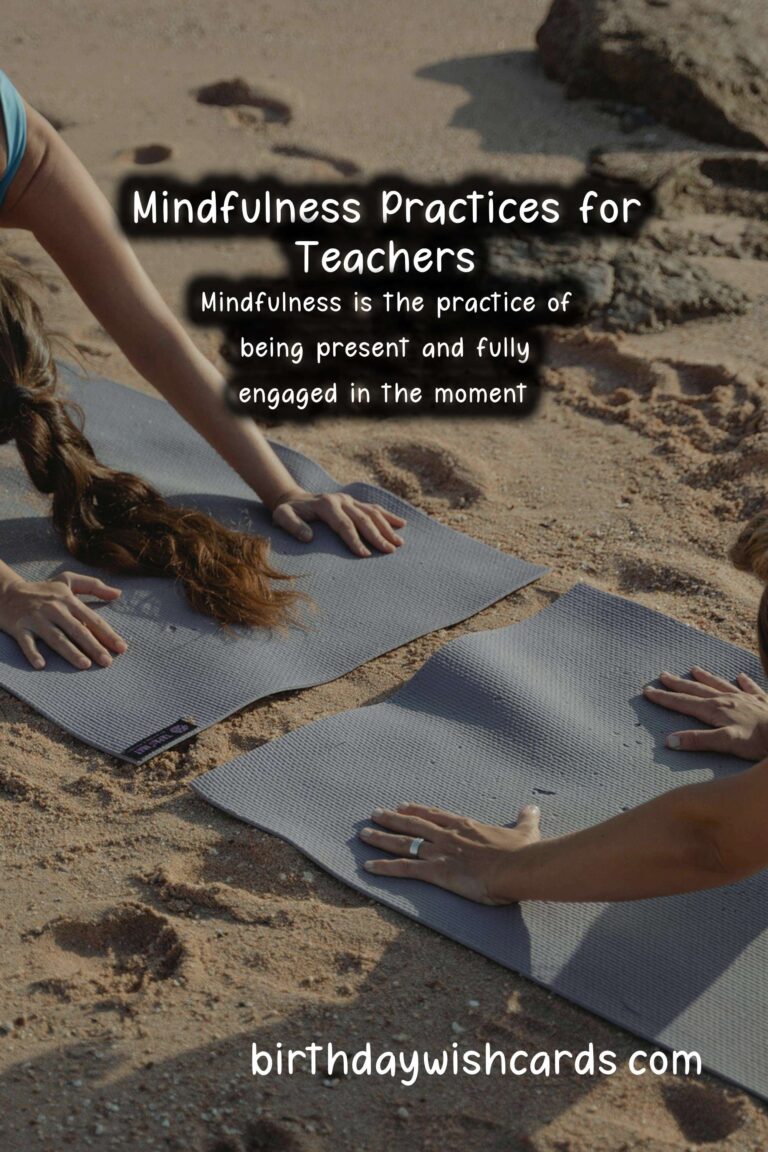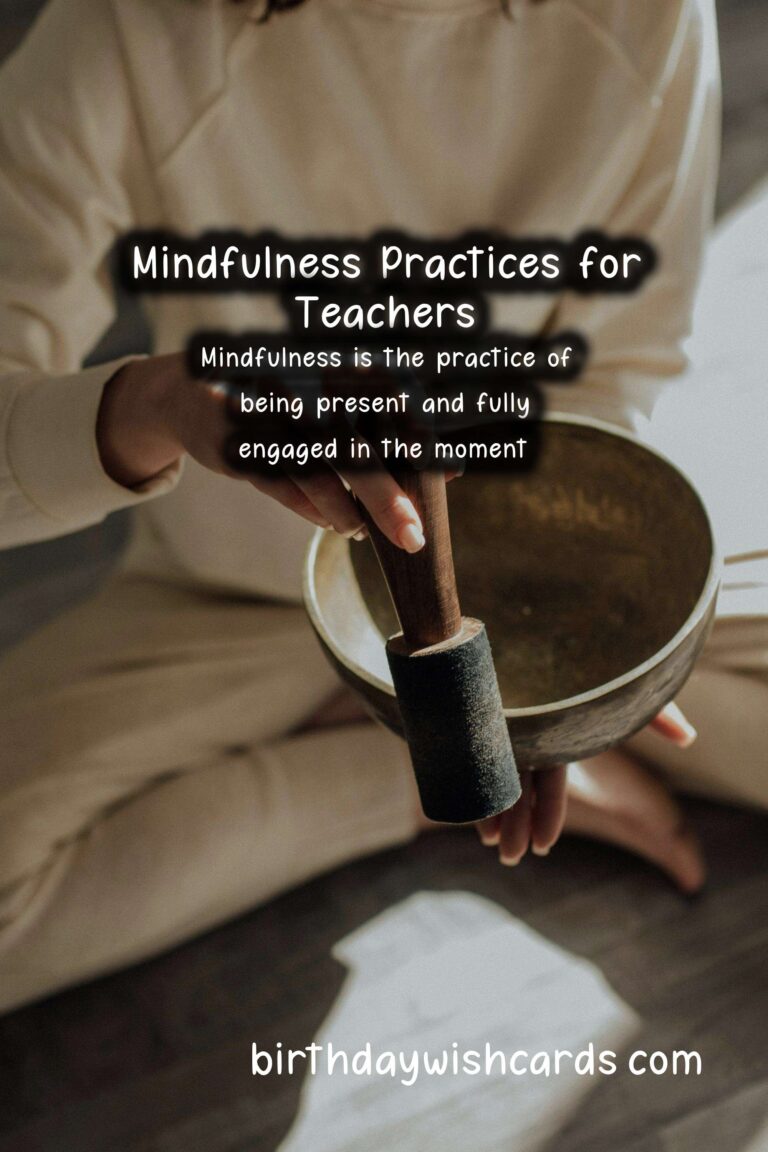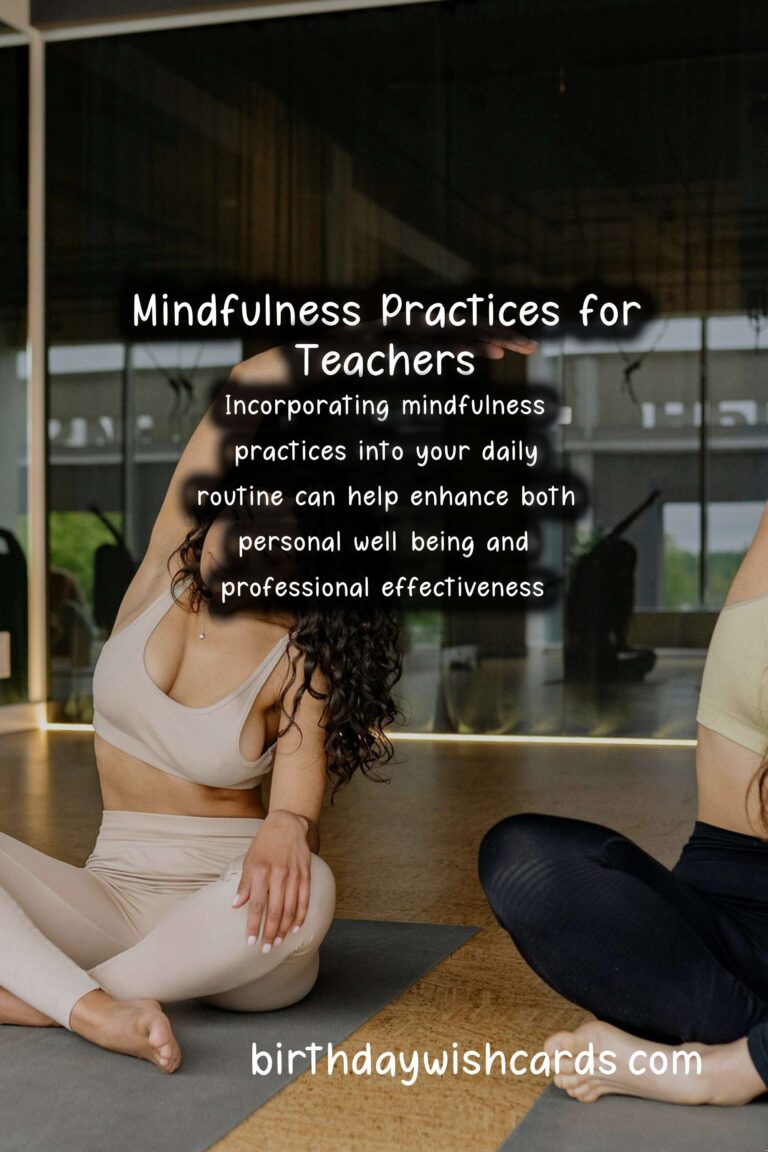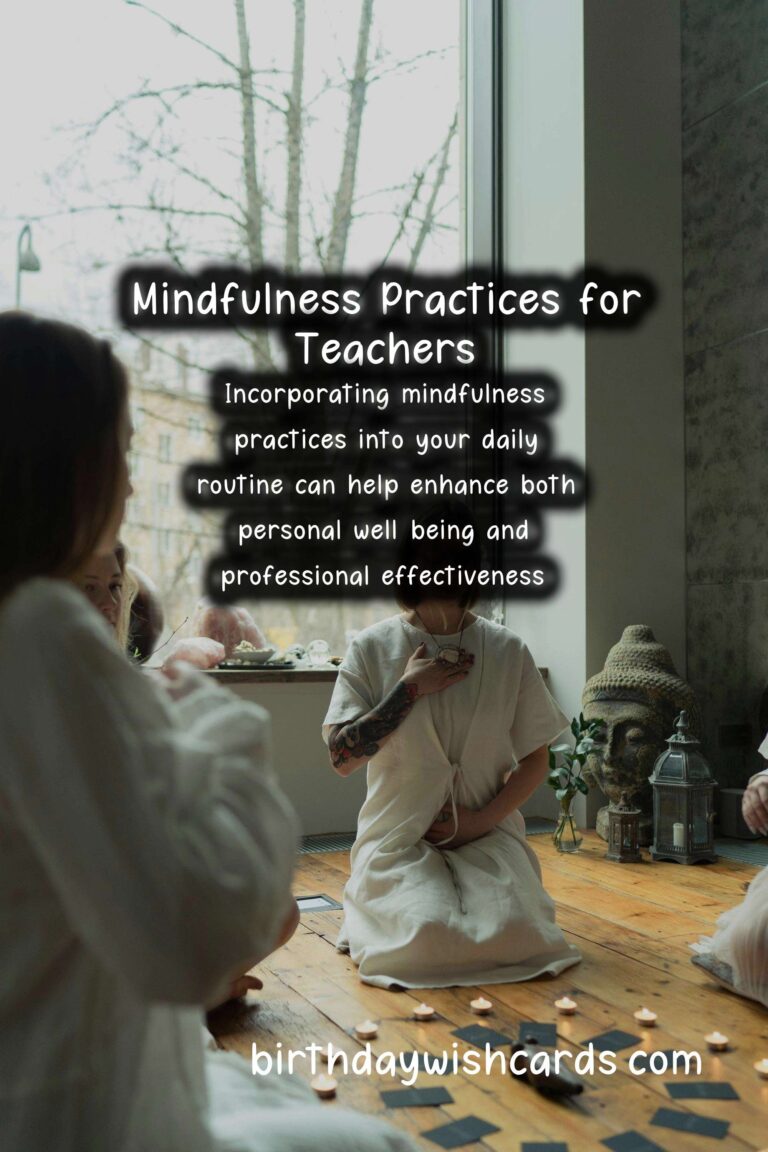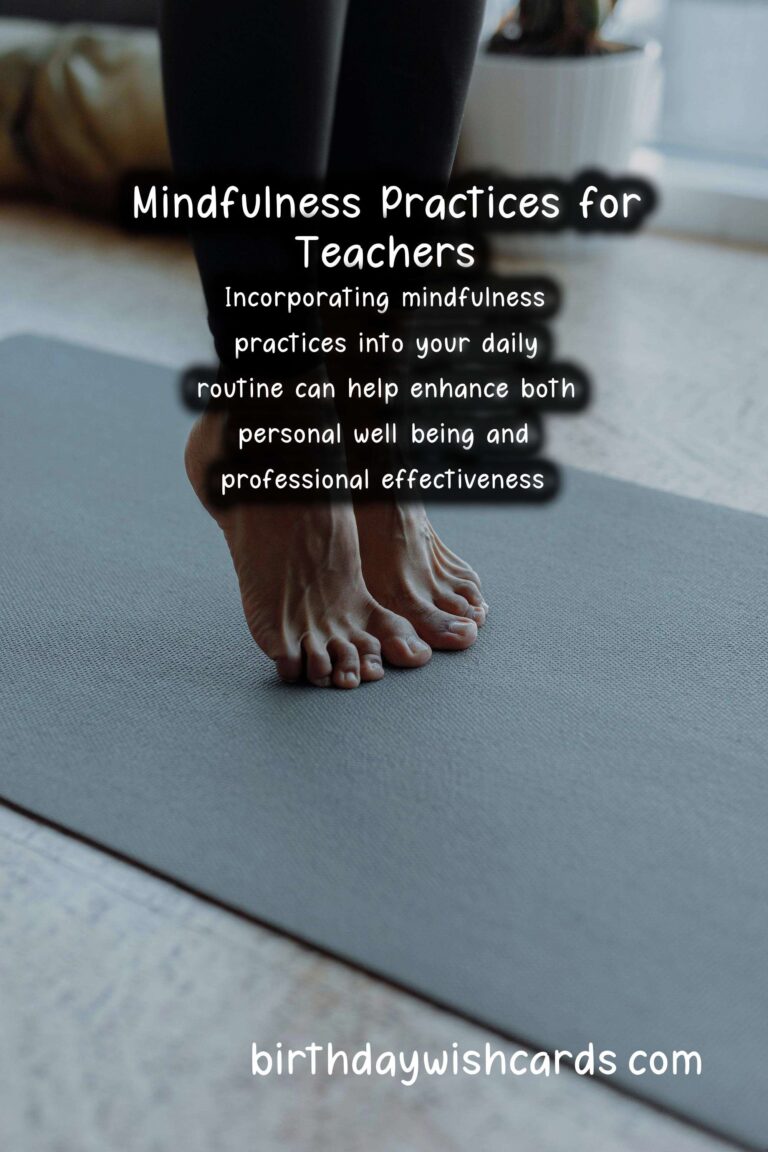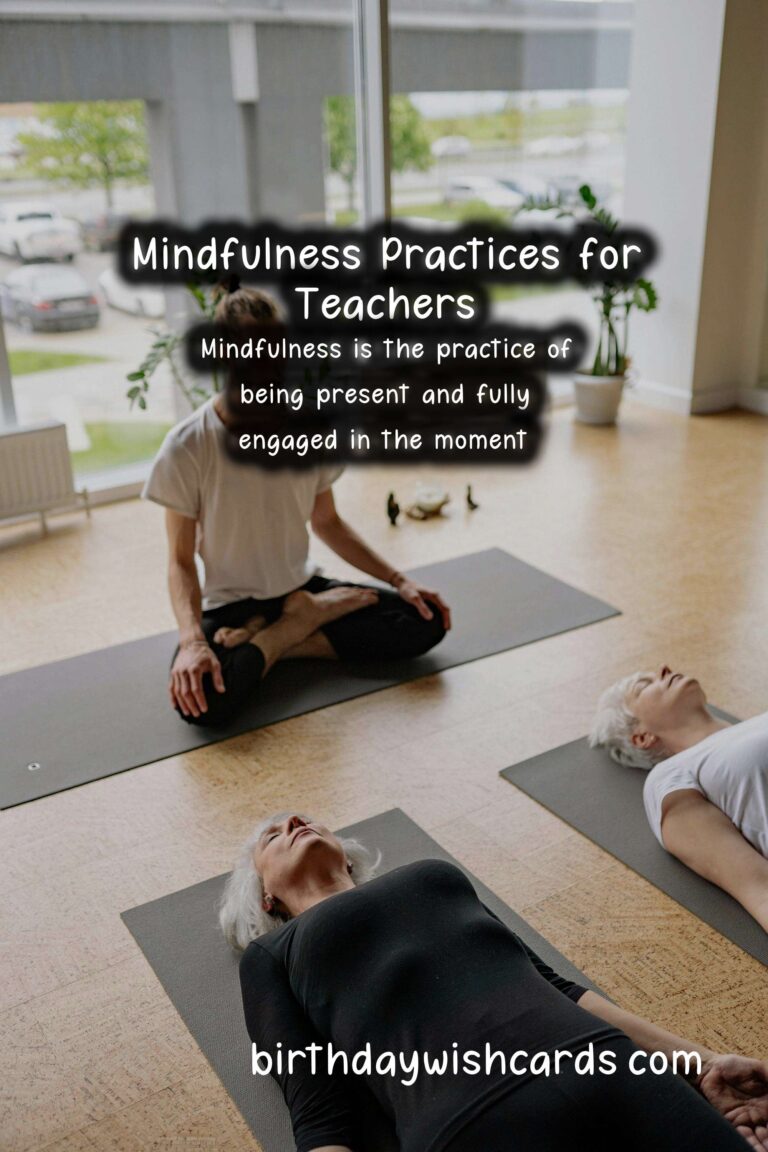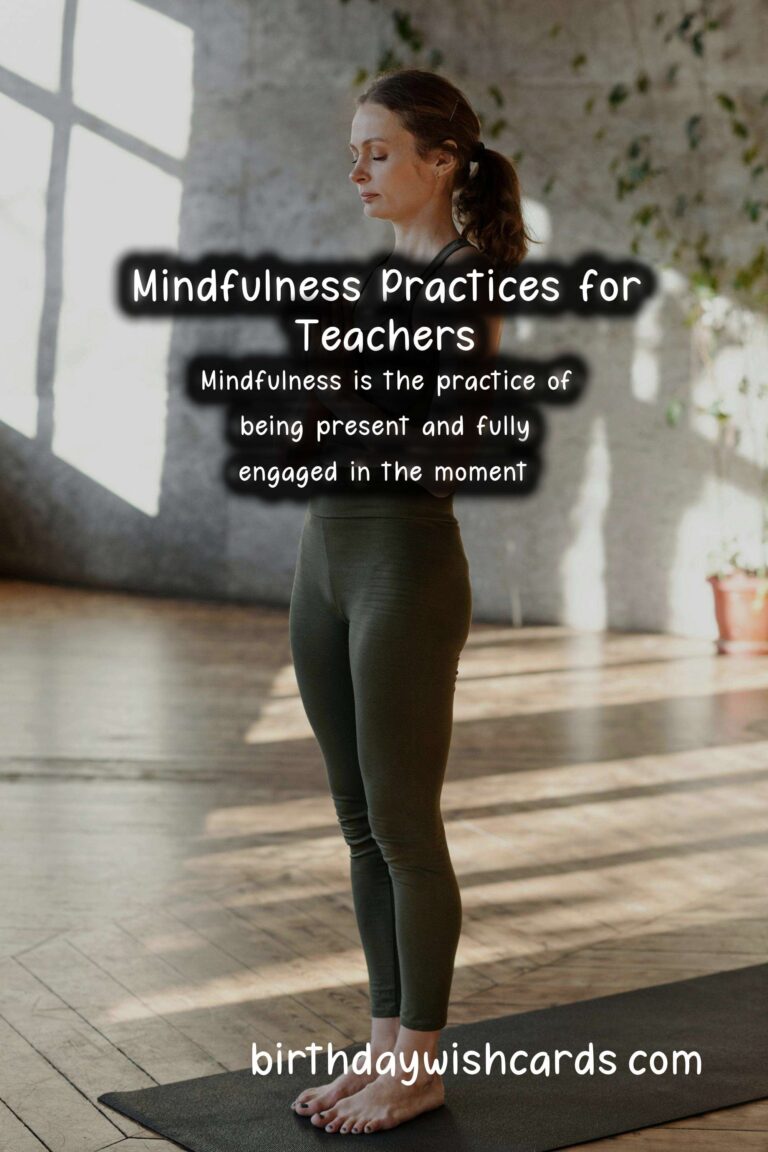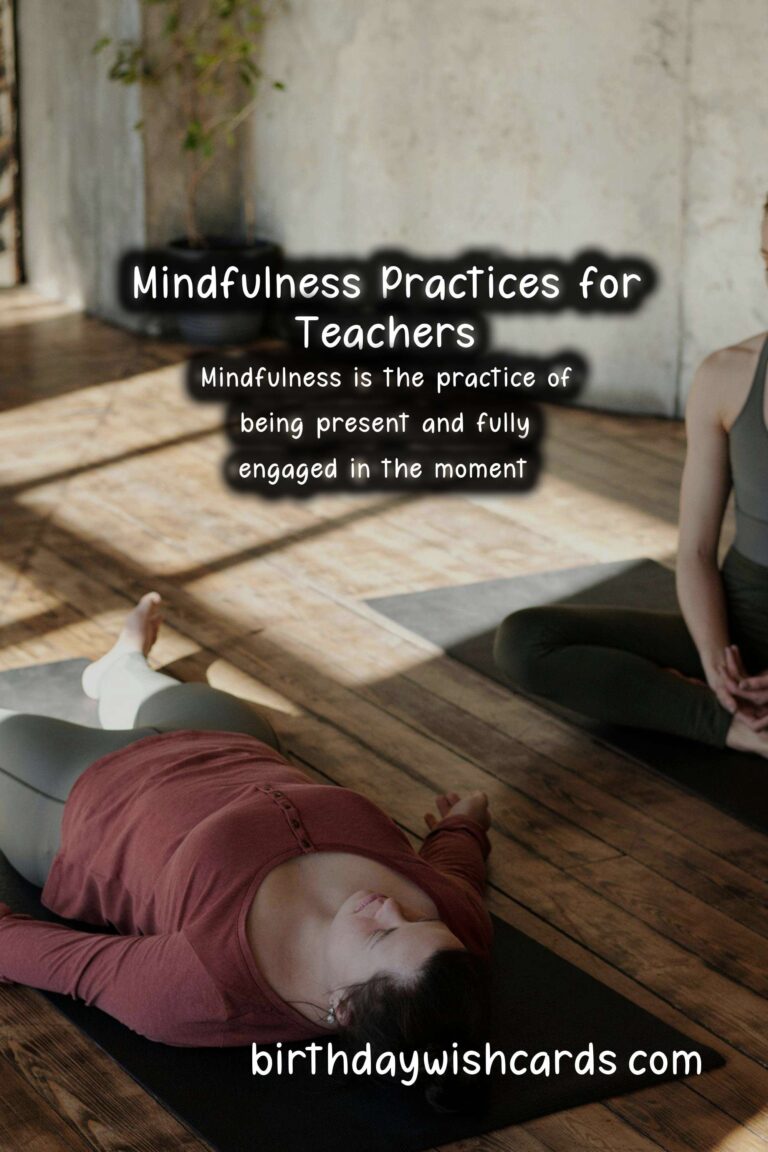
In today’s fast-paced educational environment, teachers often find themselves overwhelmed with responsibilities and stress. Incorporating mindfulness practices into your daily routine can help enhance both personal well-being and professional effectiveness. This comprehensive guide aims to explore various mindfulness techniques specifically tailored for teachers.
Understanding Mindfulness
Mindfulness is the practice of being present and fully engaged in the moment. This technique can help individuals manage stress, improve focus, and enhance overall well-being. For teachers, mindfulness can lead to a more harmonious classroom environment and better interactions with students.
Benefits of Mindfulness for Teachers
Implementing mindfulness practices in the teaching profession offers numerous benefits, including:
- Reduced stress and anxiety.
- Improved emotional regulation.
- Enhanced focus and concentration.
- Better relationships with students and colleagues.
- Greater job satisfaction.
Mindfulness Techniques for the Classroom
1. Mindful Breathing
Mindful breathing is a simple yet powerful technique that can be practiced anywhere, including in the classroom. By focusing on your breath, you can center yourself and reduce anxiety.
How to Practice Mindful Breathing:
- Find a comfortable seated position.
- Close your eyes and take a deep breath in through your nose.
- Hold your breath for a moment.
- Slowly exhale through your mouth.
- Repeat for several minutes, observing your breath without judgment.
2. Body Scan Meditation
A body scan meditation helps bring awareness to different parts of your body, promoting relaxation and reducing tension.
Steps for Body Scan Meditation:
- Lie down or sit comfortably.
- Begin with your toes and slowly move up through your body.
- Observe any sensations, tension, or discomfort.
- Breathe into those areas and visualize relaxation.
3. Guided Visualization
Guided visualization is an effective method to cultivate positive emotions and enhance focus. Using imagery can help teachers create a peaceful mental environment.
How to Use Guided Visualization:
- Find a quiet space and close your eyes.
- Visualize a place where you feel safe and relaxed.
- Engage all your senses to create a vivid mental image.
Integrating Mindfulness into the School Day
Incorporating mindfulness practices throughout the school day can have significant benefits for both teachers and students.
Morning Mindfulness Routine
Starting the day with a mindfulness routine can create a positive classroom atmosphere. Consider incorporating a brief meditation or breathing exercise at the beginning of the day.
Mindful Moments During Lessons
Introducing short mindful moments during lessons can help refocus attention and reduce stress. Encourage students to take a moment to breathe deeply or stretch between activities.
Mindfulness Workshops for Teachers
Facilitating mindfulness workshops can help teachers learn effective techniques and share their experiences with colleagues. This fosters a supportive community committed to well-being.
Creating a Mindfulness Space in the Classroom
Setting up a mindfulness space in your classroom can provide students with a haven for relaxation and focus. This space could include comfortable seating, calming visuals, and mindfulness resources.
Mindfulness Resources for Teachers
Various resources can enhance your mindfulness journey. Here are a few recommendations:
- Meditation Apps – Guided meditations for all levels.
- Books on Mindfulness – Literature focusing on mindfulness techniques.
- Mindful Schools YouTube Channel – Videos that promote mindfulness practices.
Challenges of Practicing Mindfulness
While mindfulness offers numerous benefits, teachers may face challenges when implementing these practices. Common obstacles include:
- Lack of time during a busy school day.
- Resistance from students or colleagues.
- Difficulty maintaining concentration during practices.
Overcoming Mindfulness Challenges
To overcome these challenges, it’s essential to remain patient and persistent. Consider these tips:
- Start with short sessions of mindfulness and gradually increase the duration.
- Encourage students to participate by explaining the benefits of mindfulness.
- Share personal experiences and foster a positive environment.
Conclusion
Incorporating mindfulness practices in education can transform the teaching experience. Not only does mindfulness reduce stress, but it also enhances focus and fosters a positive classroom environment. By making mindfulness a priority, teachers can enhance their personal well-being and improve the learning experience for their students.
Mindfulness is the practice of being present and fully engaged in the moment. Incorporating mindfulness practices into your daily routine can help enhance both personal well-being and professional effectiveness. 
